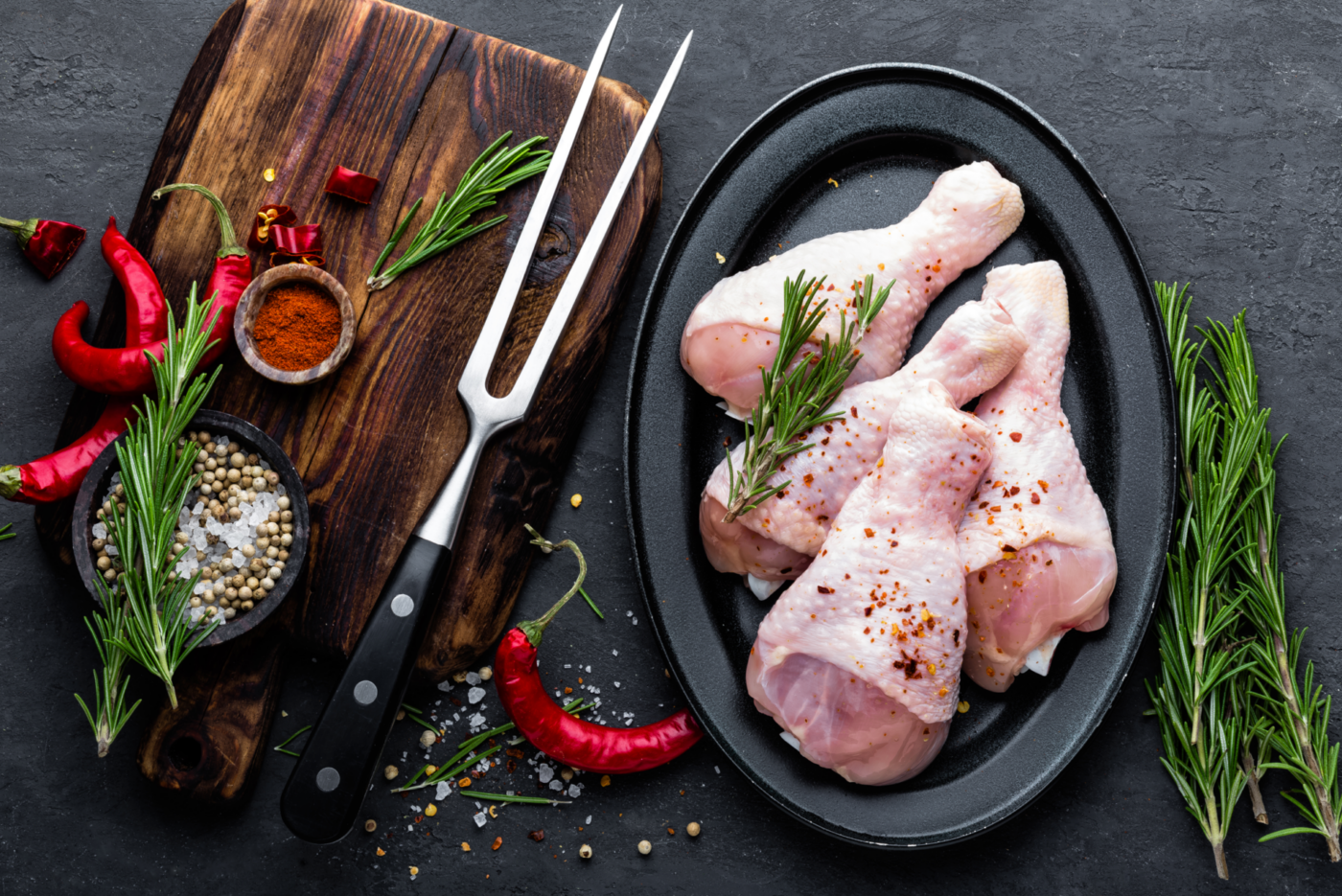Read More: Culinary History of Chicken Drumsticks
Early Encounters: Chickens and the First Bites
The story of the chicken drumstick begins with the domestication of the Red Junglefowl in Southeast Asia thousands of years ago. While these early chickens were likely smaller and less meaty than their modern counterparts, it’s safe to assume that humans, practicing a “no-waste” approach to food, consumed all parts of the bird, including the legs.
- Ancient Cooking Methods: Archaeological evidence suggests that early cooking methods involved roasting or stewing whole birds over open fires. The drumstick, with its higher fat content, would have been a particularly succulent part when cooked in this manner.
- Cultural Significance: As chickens spread across the globe, they became integrated into various cultures and cuisines. While specific references to drumsticks are rare in ancient texts, it’s logical to infer that they were consumed alongside other parts of the bird, contributing to the development of regional culinary traditions.
Medieval Times: A Leg Up in the Culinary World
During the Middle Ages, chickens became a more common source of protein in Europe. While whole roasted birds graced the tables of the wealthy, peasants likely relied on stews and potages, utilizing all parts of the chicken, including the legs.
- Practical Portions: The drumstick’s convenient size and shape would have made it a practical portion for individual servings, especially in communal cooking settings.
- Developing Tastes: As culinary techniques evolved, so did the appreciation for different cuts of meat. The drumstick’s rich flavor, derived from its dark meat and higher fat content, likely made it a favored choice.
The Rise of Fried Chicken: A Southern American Icon
Fried chicken, a dish deeply intertwined with the history of the American South, played a significant role in elevating the drumstick’s status.
- Scottish Roots: The tradition of frying chicken in fat is believed to have been brought to the American South by Scottish immigrants.
- African Influences: Enslaved Africans, drawing upon their own culinary traditions, further developed and refined the art of frying chicken, creating the flavorful and crispy dish we know today.
- The Drumstick’s Role: While various parts of the chicken are used in fried chicken, the drumstick, with its ample meat and bone for easy handling, became a particularly popular cut for this preparation.
The 20th Century: Drumsticks Take Center Stage
The 20th century witnessed an explosion in chicken consumption, driven by industrial farming, improved refrigeration, and the rise of fast food.
- Mass Production: Industrialized poultry farming made chicken more affordable and accessible than ever before. Drumsticks, being a relatively inexpensive cut, became a staple in many households.
- Fast Food Revolution: Fast-food chains specializing in fried chicken, such as Kentucky Fried Chicken (KFC), further popularized the drumstick as a convenient and satisfying meal option. The drumstick became synonymous with quick, flavorful, and readily available food.
- Backyard Barbecues: The rise of suburban culture and backyard grilling in post-war America also contributed to the drumstick’s popularity. Its higher fat content made it ideal for grilling, as it remained moist and flavorful over the heat.
A Global Phenomenon: Drumsticks Around the World
The popularity of chicken drumsticks is not confined to the United States. It’s a beloved cut in countless cuisines across the globe.
- Indian Tandoori Chicken: In India, chicken drumsticks are marinated in yogurt and spices, then cooked in a tandoor oven, resulting in a flavorful and tender dish.
- Jamaican Jerk Chicken: Jamaican jerk seasoning, a fiery blend of spices, is often used to marinate chicken drumsticks before grilling or smoking, creating a dish with intense flavor and aroma.
- Chinese Cuisine: In various Chinese cuisines, chicken drumsticks are braised, stewed, or deep-fried, often with flavorful sauces and aromatics.
- African Stews: Across Africa, chicken drumsticks are commonly used in hearty stews and braises, often combined with vegetables, legumes, and spices.
The Drumstick Today: A Culinary Icon Endures
Today, the chicken drumstick remains a culinary icon, enjoyed for its flavor, affordability, and versatility.
- Gourmet Treatment: While often associated with casual dining, drumsticks are also being embraced by chefs in more upscale settings, showcasing their potential for creative culinary interpretations.
- Healthier Options: With growing awareness of healthy eating, baked and roasted drumsticks are gaining popularity as alternatives to fried versions.
- A Culinary Canvas: The drumstick’s simple form and rich flavor provide a blank canvas for culinary experimentation, from classic comfort food to innovative global cuisine.
Conclusion
The journey of the chicken drumstick, from its humble beginnings as part of a whole-roasted bird to its status as a global culinary favorite, is a testament to its enduring appeal. Its rich flavor, convenient shape, and affordability have made it a staple in diverse cuisines and a symbol of simple, satisfying food. As culinary trends continue to evolve, the chicken drumstick, with its inherent deliciousness and adaptability, is sure to remain a beloved food for generations to come. Its story is a reminder that even the simplest cuts of meat can hold a rich and flavorful history, connecting us to cultures and traditions around the world. The drumstick is more than just a piece of chicken; it’s a culinary icon that embodies the joy of eating.


Share
Click on the icons below to share "Title of the item to share"